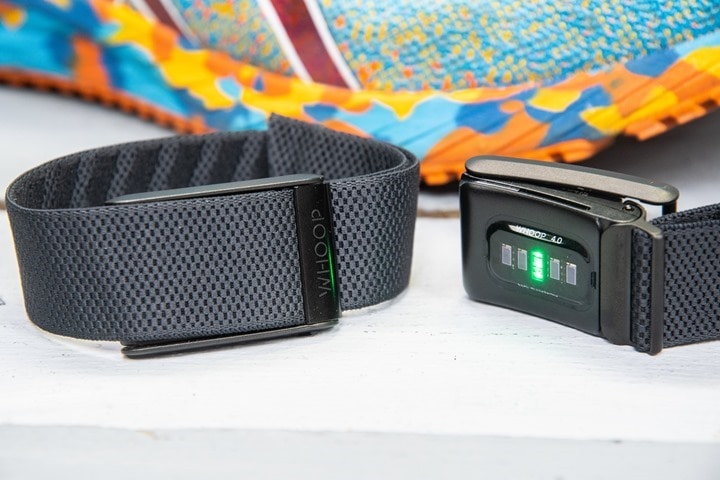
It’s been a few months since Whoop announced their new Whoop 4.0 sensor, and after enough use for me to call this review ready – it’s time to dive (deep) into the details. While the new Whoop 4.0 looks physically similar to the previous 3.0, it’s a significantly different beast of hardware. Sure, it now includes both skin temperature as well as SpO2 sensors. But the real difference you (should) actually care about is the change to the heart rate sensor itself.
See, the entirety of Whoop as a platform revolves around that heart rate sensor. Thus, if that heart rate sensor is inaccurate – absolutely nothing else in Whoop’s app matters. Inversely, if it’s accurate – then we can dive deeper into whether there’s value in the greater Whoop platform, given its pricing of $ 30/month (albeit substantially less if you buy it in 12 or 18-month chunks).
Stepping back to basics though, Whoop’s purpose in life is to try and figure out whether or not you’re training too much or too little, and whether or not your sleeping too much or too little. That’s it. It’s not a daily step counter, nor a smartwatch with a display, nor an activity tracker. It doesn’t even let those two Whoop pillars of functionality (training & sleep), mix much in its grading of your results for each pillar.
For those semi-long-time readers, you’ll know I started testing the previous generation Whoop 3.0 nearly two years ago. In fact, I’d take a pretty safe wager that nobody on this planet has as many comparative workout sets (in terms of quantity of comparative HR sensor devices per workout in total) than I do with respect to Whoop. Some 400+ workouts worth of workouts, each with 2-4 other heart rate sensor devices. And the sum total of Whoop 3.0 is that it was arguably one of the worst mainstream optical HR sensors ever made. It was objectively horrible – not just by my tests, but by virtually every trusted reviewer in this space. And given the entirety of Whoop’s data is based on heart rate sensing, all further calculations were just hot air.
But 4.0 promised significant steps in its accuracy. Therefore, that brings us to one singular question: Is Whoop 4.0 finally accurate? For that, there’s a lot to talk about. A lot of nuances, and a lot of things to digest. Sorry, there are no easy answers here.
So let’s dig into the details.
(Note: I bought this unit myself, in that I’m a paying Whoop subscriber, and thus, I reserved my upgrade early and waited a while. Back in October, while that was happening, Whoop also delivered a 4.0 media-loaner unit to get started on testing. That’ll go back to them shortly, and I’ll just keep the one I own. That’s how I roll. Oh, and I also bought a bunch of Whoop Body stuff too, to test, also in this review.)
What’s New in 4.0:

Since I cover all of this stuff in far more depth in this post, I’m gonna keep this section as brief and to the (bullet-)point as possible. Here’s what’s new in Whoop 3.0 versus Whoop 4.0:
– New sensor: This now has 5 LED’s (3xGreen, 1xRed, 1xInfared) compared to the previous 2xGreen. It now has 4 photodiodes, versus the 1 previously.
– Added Skin Temperature: We’ve seen this on a few wearables over the years, and is often used with sleep data
– Added Blood Oxygen monitoring: Measures SpO2, which is often used in both sleep-related data and high altitude data
– Added Sleep Coach with on-device alerts: This will wake you up based on optimal sleep cycles
– Added haptic motor (vibrations): This means the band can now alert you to things, starting with waking you up via Sleep Coach
– Added “Health Monitor”: This is more of an app dashboard thing, which shows live HR/skin temperature/blood oxygen/resting HR/HRV/respiratory Rate
– Added PDF Export of Health Monitor: This allows you to export out your Health Monitor dashboard metrics in a PDF for doctors/sports staff/etc in 30-180 day chunks.
– New Battery Design: Whoop says that they’re the “first product in the world” to use Sila’s new Silicon anode battery, which has 17% higher energy density and longer cycle life
– 5-day battery life: The unit maintains the previous 5-day battery life claim, despite the unit being much smaller
– New Whoop Battery Pack: This new pack is waterproof (woot!) and allows a double-tap for battery level
– Smaller size: Whoop says it’s now 33% smaller than prior
In addition to that, there’s the new Whoop Body, which is essentially a line of apparel that holds the Whoop sensor so you don’t have to wear it on your wrist. These products include:
– Compression tops ($ 64)
– Leggings ($ 109)
– Shorts ($ 78)
– Sports bras ($ 79)
– Bralettes ($ 54)
– Athletic Boxers
– Regular Boxers (two-pack for $ 69)
– New ‘SuperKnit’ and ‘HydroKnit’ bands
Got all that? Good, let’s get rollin’.
Oh, actually, one more thing. For lack of anywhere else to stick it, Whoop pricing is $ 30/month. There is no cost for the device itself. Instead, you ‘merely’ commit to a 6-month membership, and then the device comes with it. Further, for existing members, you get the new 4.0 device automatically, for free (as long as there are 6 months left on your membership). If you buy your membership in 12 or 18-month chunks, then it reduces the cost down to about $ 18/month (18-month).
In terms of Whoop 4.0 availability/shipping/delays, like most things in 2020/2021, it’s a proper mess. And like most companies these days, a chunk of that is to blame on the world situation, and a chunk of that is to blame on poor communications. I don’t see much value in focusing on that in this review, even despite Whoop’s recent increase in communications over the past few days trying to satisfy users. It is what it is, and honestly, it doesn’t have any impact on what happens after you receive that device, which is what my review is actually about. There’s plenty of other things here for me (or you) to have legitimate complaints about (you know, like a lack of API, ability to properly export data files, etc…).
Ok, now, it’s time to get rolling.
What’s in the Box:
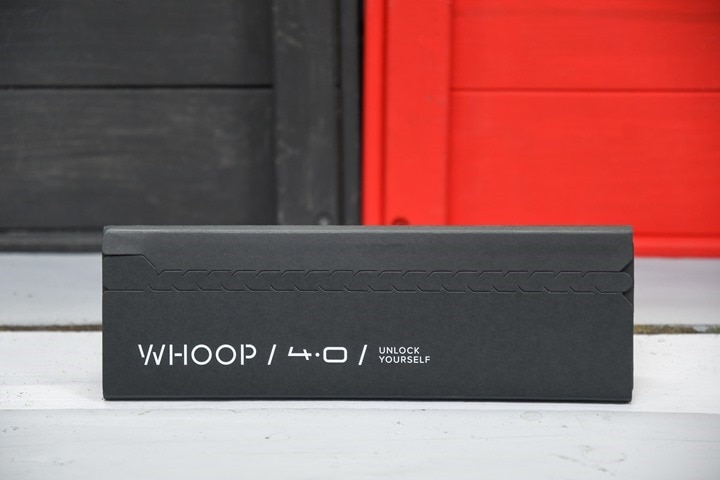
The Whoop 4.0 box is a pretty straightforward affair. You’ll undo the cardboard zipper to reveal the Whoop 4.0 strap folded up inside. Below deck is the charging pod, along with a beef stick of a USB cable. Also, some paper stuff you won’t read. Here are all the parts out on the table:
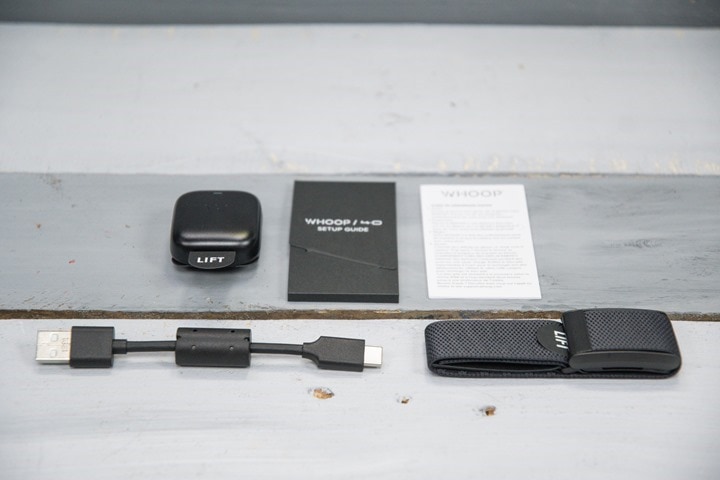
The Whoop 4.0 pod has cardboard stuffed in it to keep it looking pretty, so you’ll remove that, along with the protective film on the sensor.
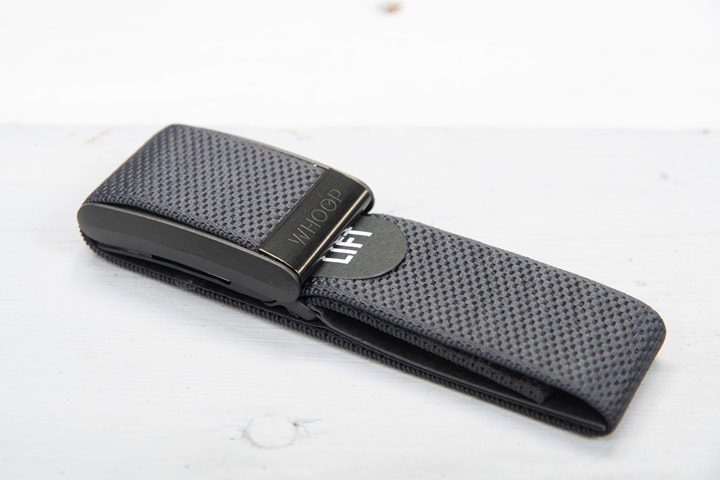
The strap and hinge design are different from 3.0, which we’ll get to in a moment.
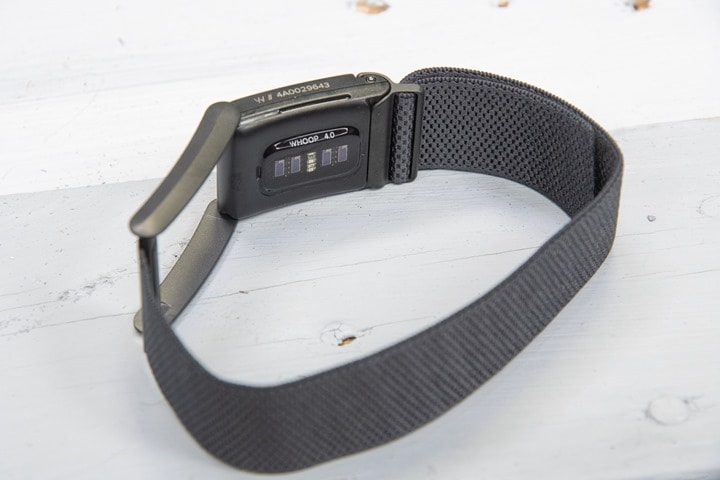
There’s the new wireless charging battery pack, meaning that it’ll wirelessly charge your Whoop 4.0, but itself it needs to be charged via USB-C cable:
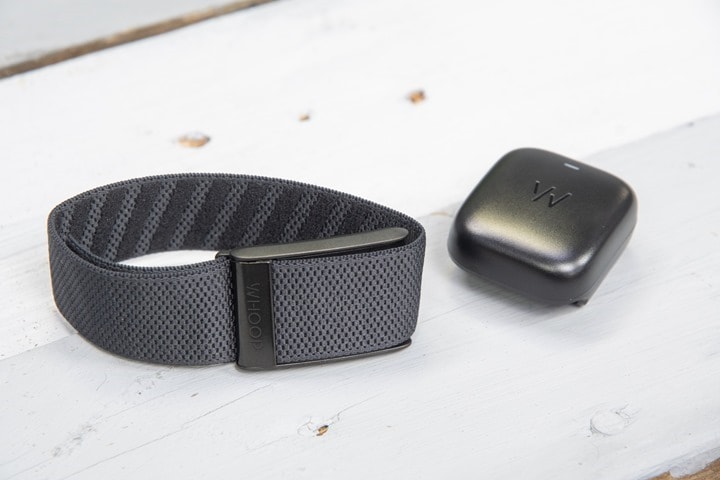
While you can use most USB-C cables, they do include the beefiest yet shortest USB cable I’ve seen in my life. It’s like this cable desperately wants to grow up to be one of those overpriced $ 60 HDMI cables you see, but then life got in the way:

In any event, here’s the Whoop 3.0 (my beaten up one, with a touch bit of mountain bike dirt on it) and Whoop 4.0 side by side:
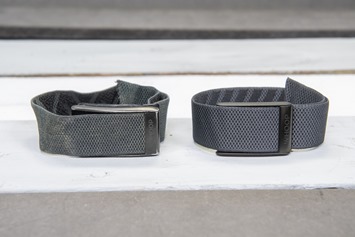
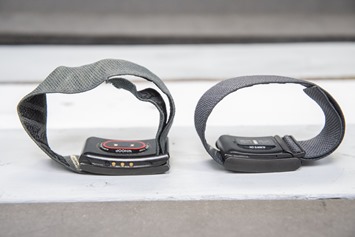
And here’s the two battery packs side by side:
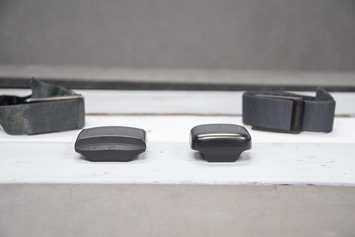
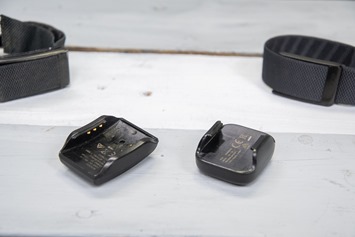
With that, let’s dive a bit deeper into the hardware.
The Hardware Basics:
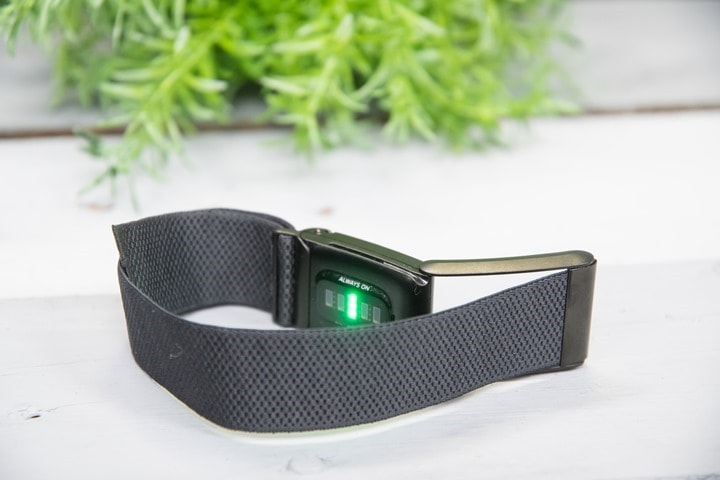
The Whoop 4.0 pod might look similar from across the room, but once you open the clasp, you realize it’s substantially different. They’ve ditched the charging contact points on the side for wireless charging, and the bands can now quickly slide on and off (avoiding having to thread the fabric like before). It’s a far more polished design than previously, especially if you change bands often (and logically, now makes secondary accessory band purchases more appealing). Of course, the main reason for cleaning up the entire clasp situation is for Whoop Body, the apparel line that integrates with the 4.0 sensor. More on that in a second.
The Whoop 4.0 pod, as with past units, has no display on it.

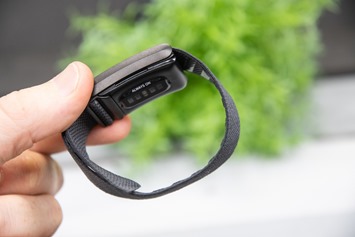
Instead, everything is about the underside – the sensor under it. This is where Whoop has changed sensors and the quantity of those sensors, as outlined earlier, all in an attempt to increase accuracy (plus, give more data like SpO2 readings).
You can slide the band off the sensor pod, leaving just the sensor itself. This then allows it to be slid into various Whoop Body garments:
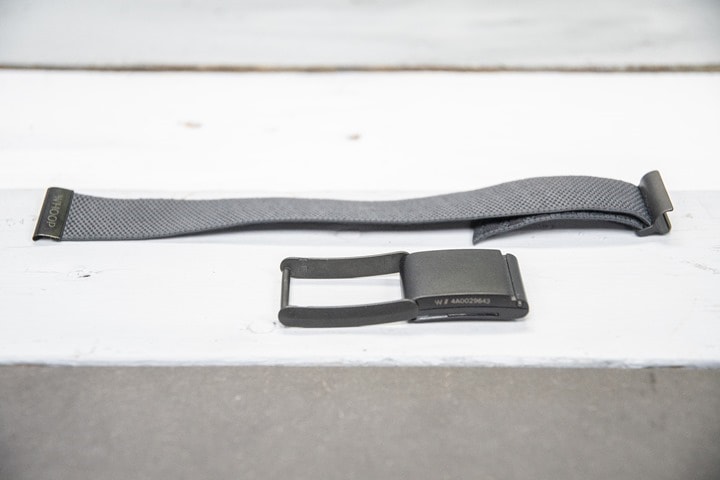
Whoop has a number Whoop Body garments at launch, including ones for both workout and the rest of the day. These include workout shorts, compression leggings, compression tops, sports bras, and armbands. On the 24×7 side, they include boxer-briefs and bralettes.
In my case, I bought a pack of boxer-briefs, the workout shorts, and an armband. Plus also a bicep band. I’ve been testing all of them, and have the results included in the appropriate sections below (e.g. sleep, workout, etc…), as well as a dedicated Whoop Body section below.
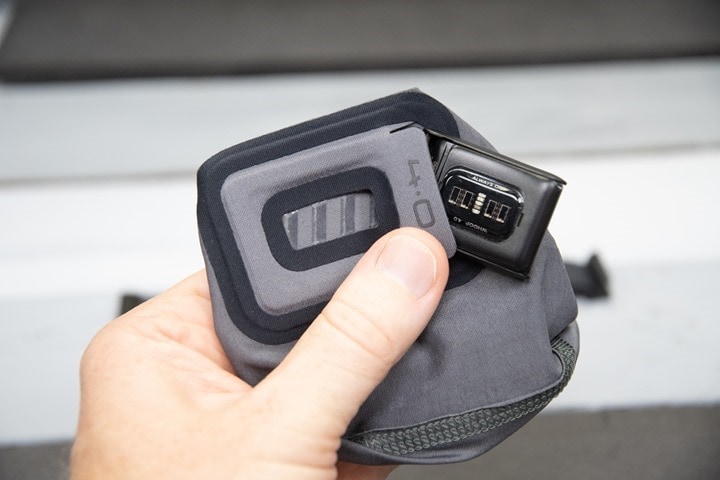
Back on the pod, as part of the design change, Whoop introduced a new battery pack. Whoop has always charged via this battery pack, which acts like a mid-air refueling tanker. It’s arguably one of the best parts of Whoop, and means you never have to take your device off your wrist to charge. The battery pack itself charges via USB-C, and is now a waterproofed port. You can see it has a single status light on it, that either shows red, or green – depending on if it’s happy and fulfilled in life, or not.
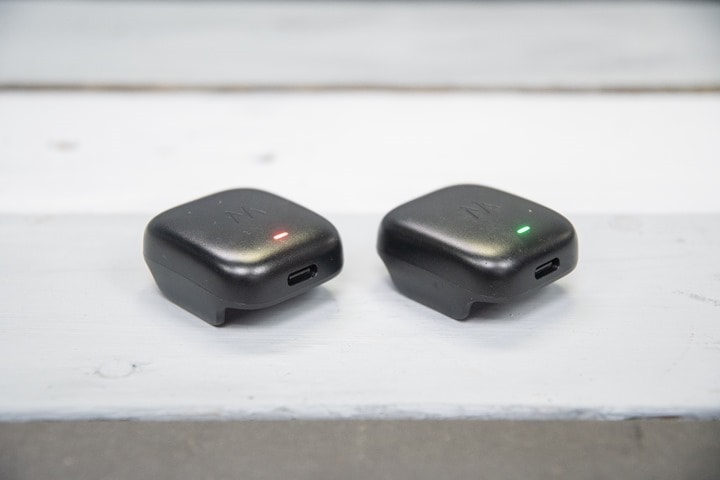
You simply slide the battery pack onto the Whoop 4.0, and it snaps in place. The fit is snug. On one unit of mine, it slides it cleanly, but on the other one, it’s super-duper snug (too snug). Maybe it’ll loosen up over time.

With the battery pack having a waterproof charging port, it means you don’t have to worry about wearing it in the shower with the battery pack attached. I’ve killed one previous Whoop 3.0 battery pack that way (though, it did take probably half a dozen showers over the course of a year to kill it).
In terms of the new battery pack design, I’m mixed. The new battery pack takes longer to charge itself, and then takes longer to charge the Whoop 4.0. Whoop says 2 hours to transfer wirelessly from battery pod to Whoop 4.0, and my testing puts that virtually spot on. In one test I placed the battery pack on the Whoop while the Whoop 4.0 was at 10%, and I kept taking screenshots over the course of just shy of two hours until it was completed charging:
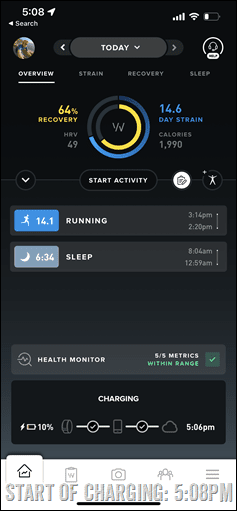
![clip_image001[16] clip_image001[16]](http://media.dcrainmaker.com/images/2021/11/clip_image00116_thumb-1.png)
![clip_image001[20] clip_image001[20]](http://media.dcrainmaker.com/images/2021/11/clip_image00120_thumb.png)
In most cases, this isn’t a big deal – though if realizing (like yesterday) that you are down to 4% and want to go for a workout using Whoop Body gear (where the battery pack won’t fit), then the slower charging is a pain (whereas the Whoop 3.0 charged incredibly quickly, especially initially). As a general rule of thumb for 4.0, 1 minute = 1%, up till around 80% or so, and then it gets slower from there till finish. So while the new one is slower to charge/discharge, and a bit more bubbly than the last one in height – I significantly appreciate the waterproof port on it.
Finally, in terms of battery life, I’ve seen (numerous) comments in all manner of locations that folks are having issues with the Whoop 4.0 battery. In my case, I’ve been somewhat lucky there and haven’t seen anything different odd. I have two Whoop 4.0 units, and three batteries between them. The first unit was delivered from Whoop themselves, with them clearly knowing it was going to me (and QA’d as such). However, the second 4.0 unit went through normal fulfillment (me ordering it on day of launch), shipped from their EU distribution center.
I don’t see any evidence they had any ‘extra’ control over this second unit. Mainly because they didn’t know/realize I still had that order pending, until after it had shipped through the regular customer queue. Also, unlike my first unit, this one was in a fully cardboard-zipper-sealed box – meaning it came straight from the factory as-is.
None of that is to discount the battery issues folks are seeing (obviously, they are real), but simply to note that it’s not every unit (and, I’m guessing it’s %-wise a small number, based on my napkin math for unit shipments vs battery issues). It also sounds like a recent firmware update has helped a number of people with battery issues. Either way, I’ll be keeping an eye on it.
The Whoop Basics:
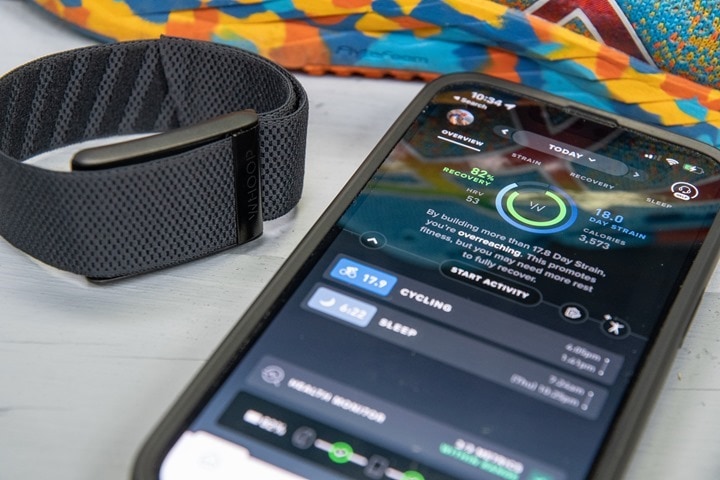
The first few days with Whoop can be a bit perplexing, though that experience has gotten better in the last year or so with new wizards and onboarding screens that show during that first week. However, the core thing you need to know once you’ve got Whoop paired up to the app is that Whoop basically measures and reports on two core things:
A) Strain: How hard you worked out that day
B) Recovery: How well you slept that night
I note that because the Whoop band doesn’t really track anything else. It’s not going to show you steps, nor will it show you miles run, or sets completed in the gym.
Now, strain is derived *PURELY* based on heart rate. The higher your heart rate, the more strain you accumulate. This means that technically speaking strain can be accumulated throughout the day anytime your heart rate rises. For example: A brisk walk, playing with your kids, or making kids (including practicing). However, doing an activity by itself doesn’t contribute to strain. Meaning that you can casually walk 10 miles, and if your heart rate stays low enough, there’s no added amount of strain. Your daily strain starts off at 0.0, and then climbs in value throughout the day, accumulating as you go along.
![clip_image001[25] clip_image001[25]](http://media.dcrainmaker.com/images/2021/11/clip_image00125_thumb-1.png)
The intensity of the workout drives the strain, not the duration. Of course, the longer you have a higher intensity, the more strain you’ll get. It’s notable though that strain isn’t comparable between yourself and friends. That’s because it’s based on your specific intensity and heart rate zones. Meaning if I go for a Turkey Trot run with a World Record marathoner, his strain will be far less than mine – since it’ll seem easy to him effort-wise (and HR-wise).
Within the Whoop app, anytime you do a workout it’ll show the stain value next to it (14.1 below). Additionally, you’ll see your total strain at the top of the app (14.6). This is the main page in the Whoop app, and what you’ll see every time you open the Whoop app.
![clip_image001[22] clip_image001[22]](http://media.dcrainmaker.com/images/2021/11/clip_image00122_thumb.png)
If you tap on ‘Strain’ at the top, you’ll get a big oversized number, showing you the same number as before. However, if you swipe down you’ll see that week’s strain. You can also tap the date ranges up top to look at other weeks:
![clip_image001[27] clip_image001[27]](http://media.dcrainmaker.com/images/2021/11/clip_image00127_thumb-1.png)
![clip_image001[29] clip_image001[29]](http://media.dcrainmaker.com/images/2021/11/clip_image00129_thumb-1.png)
It’s really as simple as that. Everything is about that number. We’ll dive into the workouts and what you see within a workout in the next section. But otherwise, it’s all about your heart rate throughout the day. The theoretical max strain Whoop will ever give is 21. Meaning that, unlike most other training load accumulation platforms which allow unlimited strain (load), Whoop’s algorithms top out at 21. The challenge with this is that it just doesn’t work out in real life. It assumes that once you reach 21, you should basically be unable to do anything else athletically. But in real-life, as Whoop themselves showed with their sponsorship of Team EF in the Tour de France both last and this summer, they basically hovered at 20 each day for weeks. In real-life, that shouldn’t be possible, no matter how good an athlete you are. If indeed 21 is the absolute max you can achieve in a day where you drop of exhaustion, then realistically speaking you shouldn’t be able to do that for multiple weeks on end.

Anyways, if you want to see your entire day’s heart rate, you’ll need to use the Whoop website for that. That’s where it shows your heart rate over the course of the day:
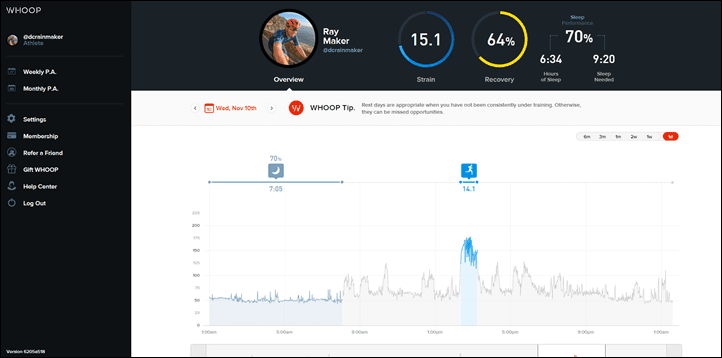
Now one of the key challenges I had with Whoop 3.0 is ‘fake strain’ and ‘fake workouts’. This often happened when Whoop *thought* I was doing a workout and very much didn’t. In those workout cases, I’d see heart rate spikes to 150-160bpm (which would add fake strain). For example sitting on the ground slowly picking weeds, or casually doing the dishes, or even easy-pedaling an e-bike. These were all cases of an inaccurate optical heart rate sensor and/or algorithms. My heart rate was never anywhere near those levels. Unfortunately, there was, and is, still no way to ‘erase’ fake strain in Whoop (to nullify it).
But, the (partial) good news is that I have yet to see any fake workout strain in Whoop 4.0. By that, I mean that I’ve not seen a single fake automatically generated workout where it massively spikes my heart rate to 150-170bpm while doing something that’s not a workout. That’s good and important.
However, I’m still seeing unexplained non-workout minor-grade fake-strain in Whoop 4.0. In this case, I’m getting upwards of 11 units of strain on some mornings for literally doing nothing other than sitting at my desk, or standing in front of a camera. I’ve also had 4-5 units of strain while doing nothing more than making coffee. None of these have spiked my heart rate high enough to create a workout, but instead, end up adding low-volume amounts of strain noise all day. This is due to inaccuracies in the heart rate data while wearing it on the wrist.
For example, let’s look at a ~20hr period with a Whoop 4.0 unit worn on my wrist:

Now, let’s look at that *exact same* period, with another Whoop 4.0 unit worn in the Whoop Body boxer-briefs switching during a workout to the Whoop Body Workout shorts. While they might seem similar at first glance, take a close look at the left-side scale and how the Whoop wrist-based one is often quite a bit higher during the day, and quite a bit more jumpy. This is especially notable between 8-10AM, as well as 2-3PM, where the values on the wrist-one spike to 140bpm, as the values on the boxers sit below 100bpm. This is fake strain.

On that morning, by 9:40AM I had accumulated a Strain of 4.3 on the wrist, while having a strain of 0.0 on the boxers. Thus the default wrist position adds a moderate amount of fake strain throughout the day – and has done so consistently throughout my test period.
So while Whoop’s exercise detection algorithms won’t trigger automatic workouts as they do in the past, the underlying incorrect heart rate values are still often there – just not as spikey to 150bpm, instead usually floating in the 120-130bpm range. In talking to Whoop, they said they now look at other data aspects to see if those high heart rate spikes can be justified through other motion before declaring a workout.
Unfortunately, as with Whoop 3.0, there’s still no way to nullify bad strain (or to reduce it). I asked Whoop why they didn’t offer some method of doing so, and they noted that they’d prefer to focus on tuning the algorithms to reduce the inaccuracies, rather than sidestep it. And while that’s a noble goal, the simple reality is that when you’re wearing an optical HR sensor 24×7 on your wrist, there’s likely to be some inaccuracies in the data. And given how the entirety of Whoop depends on that HR being roughly correct, it would behoove them not to be too proud of an algorithm and sensor that isn’t perfect. Doing so would make entire sections in this review, as well as endless threads on Reddit…well…null.
Workout Tracking:
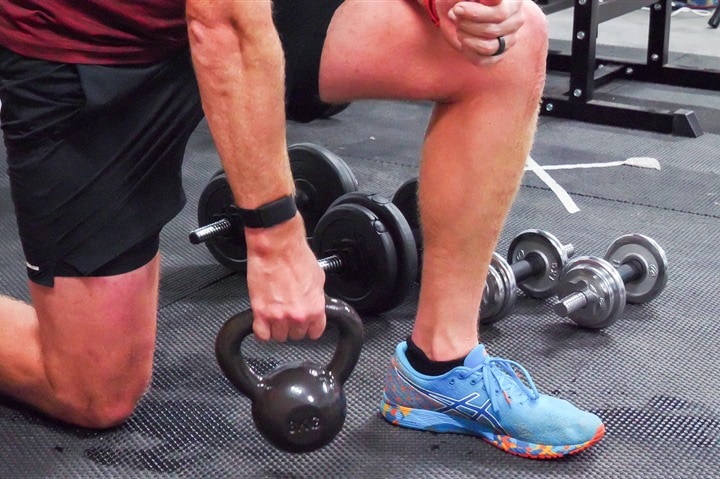
Now workouts are tracked one of two ways, neither of which actually matters behind the scenes. Since Whoop is recording heart rate 24×7, and thus strain 24×7, it’s always accounting for your workouts, even if you don’t specify that something is a workout.
That’s because by default automatic workout detection is on, which means that it’ll automatically create a workout when it thinks you’re doing a workout, and then end the workout when it thinks you’re done. It does this with actually pretty astonishing accuracy for all sorts of workout types. You won’t get notified on the Whoop unit itself, or even the app. Instead, this all happens after the fact, behind the scenes on the app.
The app will then notify you (usually a short bit after you get out of the shower), that a workout was detected, and you can then confirm the details of it (you can change the workout type too here). You can adjust the start/end times of a workout. Afterward (or, by just tapping the activity), you’ll see the heart rate chart of the workout, as well as some basic stats along the bottom.
![clip_image001[31] clip_image001[31]](http://media.dcrainmaker.com/images/2021/11/clip_image00131_thumb-1.png)
![clip_image001[33] clip_image001[33]](http://media.dcrainmaker.com/images/2021/11/clip_image00133_thumb-1.png)
![clip_image001[35] clip_image001[35]](http://media.dcrainmaker.com/images/2021/11/clip_image00135_thumb-1.png)
Further, it’ll ask you three questions around intensity and completion. I appreciate that back a few months ago Whoop changed the wording on the last question, which used to be worded as a double-negative, and was confusing AF. Now it’s simple. Simplicity is good. Once that’s done, you’ll see the workout show up on your homepage with the appropriate sport type, this will also contribute to the daily stain shown up top.
What’s notable here is that even if you delete this workout out, your total daily strain won’t change. That’s because Whoop sees life as a 24×7 HR continuum, and you have no eraser in that game. Thus while you can visually remove the workout identifier from your app, it doesn’t change the underlying data that Whoop uses for strain. Like Crystal Pepsi, that memory isn’t erasable. Inversely, if for some reason Whoop didn’t trigger an automatic workout creation on your dashboard, you can do that by tapping the little workout icon, and simply enter your start/end times, and it’ll create workout for you.
Now the second way you can create a workout is to do so manually. Simply tap the ‘Start Activity’ button within the app. This brings open a screen that shows your current heart rate. At the top, there’s a sports picker, where you can pick from a broad list of sports. If you choose an outside sport, it’ll toggle on the GPS to track your route. You can turn that off with the ‘Track Route: On/Off’ switch at the side.
![clip_image001[37] clip_image001[37]](http://media.dcrainmaker.com/images/2021/11/clip_image00137_thumb.png)
![clip_image001[47] clip_image001[47]](http://media.dcrainmaker.com/images/2021/11/clip_image00147_thumb.png)
Down at the bottom there’s the ‘Strain Coach’ option. This allows you to set a given target value of strain for the day, and then continue working out until you hit that value. It’s sorta like how some apps/watches have a ‘Calorie Goal’ or ‘Distance Goal’, except in this case it’s a ‘Hurt Goal’, insomuch as you can increase the level of suffering and then have the app tell you when you reach that goal.
![clip_image001[49] clip_image001[49]](http://media.dcrainmaker.com/images/2021/11/clip_image00149_thumb.png)
This is on a per-activity basis, so it’s not looking at your total Strain to date on that day. There’s also an optimal range, based on your sleep and existing strain, which is shown with the dotted line. You can also instead tap the little clipboard icon at the bottom of the app, which shows your recommended strain for the day, based on your recovery from last night:
![clip_image001[45] clip_image001[45]](http://media.dcrainmaker.com/images/2021/11/clip_image00145_thumb.png)
Once you start a workout you’ll see your current heart rate, heart rate % of max, average heart rate, max heart rate, calories, and activity strain, ad even a heart rate graph:
![clip_image001[39] clip_image001[39]](http://media.dcrainmaker.com/images/2021/11/clip_image00139_thumb.png)
![clip_image001[43] clip_image001[43]](http://media.dcrainmaker.com/images/2021/11/clip_image00143_thumb.png)
![clip_image001[41] clip_image001[41]](http://media.dcrainmaker.com/images/2021/11/clip_image00141_thumb.png)
If you’ve done an outside GPS workout, then you’ll also see a map of where you’ve wandered (above). That map is then shown both after the fact, and when synced to Strava.
Note that both automatic workouts and manual workouts can upload to Strava. The way it works is both workouts upload to Strava as soon as they appear on your dashboard. In the event you need to tweak the times, I recommend that you delete the workout on Strava first, give it a minute or so, and then the new workout will show up once you’ve tweaked the times. In fact, since Whoop has zero ways to export a workout today within the Whoop platform, I use Strava as a way to export/capture all my workout data from Whoop.
Finally, note that you can broadcast your heart rate to 3rd party apps and devices (such as a Peloton Bike), via Bluetooth Smart. You will need to toggle this within the settings, but then it stays available permanently for future apps to connect to (there’s no meaningful battery impact here, as the sensor basically just goes into a low-power advertising mode when not connected to it). Also, there’s some additional settings around pairing devices, checking for firmware, etc in here.
![clip_image001[51] clip_image001[51]](http://media.dcrainmaker.com/images/2021/11/clip_image00151_thumb.png)
![clip_image001[53] clip_image001[53]](http://media.dcrainmaker.com/images/2021/11/clip_image00153_thumb.png)
With that, we’ve covered all the workouts bits, so let’s dip into the next pillar: sleep.
Sleep Tracking:
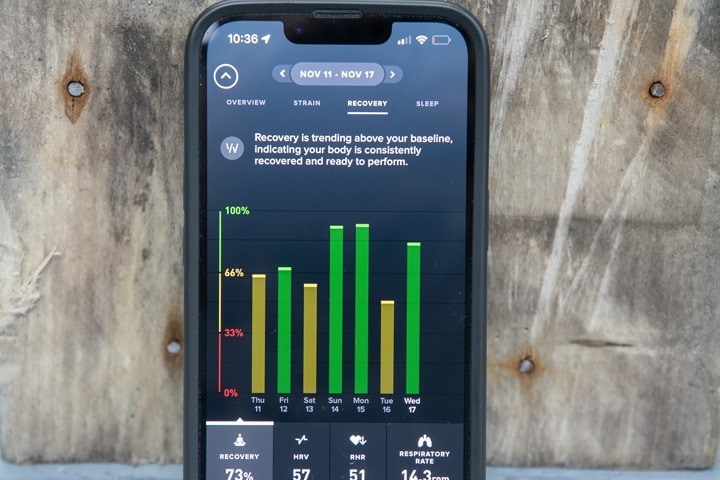
Now like workouts, Whoop automatically detects sleep. And in my experience, it’s really damn good at detecting the start and end times of sleep when worn on the wrist (both 3.0 and 4.0). However, for other locations, things get mixed. I detail those accuracy bits deeply in the next section.
To track your sleep, simply go to sleep. The next morning when you awake, Whoop will notify you that it’s processed your sleep for the night. Typically speaking I find this about 15-30 minutes after I wake up. Or a bit less time if I quickly go straight into doing something that’s clearly not sleep (like a bike commute). Inversely, it’s very good at figuring out when I’ve gone back to sleep. For example, waking up to help the kids start their breakfast on Saturday for 5-6 minutes, and then go back to bed for a few hours, it sees that as one sleep (with awake time).
As part of that sleep processing, it’ll ask you a few questions about the previous day, which is your journal. Your journal allows you to sus out patterns about your life. For example, does later day caffeine or alcohol, impact recovery or your sleep? How does a redeye-flight impact it? Does sleeping together with your partner impact it?
![clip_image001[55] clip_image001[55]](http://media.dcrainmaker.com/images/2021/11/clip_image00155_thumb.png)
![clip_image001[57] clip_image001[57]](http://media.dcrainmaker.com/images/2021/11/clip_image00157_thumb.png)
![clip_image001[59] clip_image001[59]](http://media.dcrainmaker.com/images/2021/11/clip_image00159_thumb.png)
But these are customizable. There’s literally the longest list you’ll ever see of pre-defined choices. You can add this to your daily journal, as well as keep some of them toggled on semi-constantly (like parenting an infant).











Back on the home page you’ll have received a Recovery Score – this is basically your score of how recovered your body is, which is heavily dependent on how much sleep you’ve got, the quality of the sleep, and your HRV values. Note that Whoop also technically has a ‘Sleep Performance Score’ (e.g. 75%). That is different. That number is simply how much sleep you got divided by how much sleep Whoop wanted you to get that night. Meaning just because you get a 100% sleep performance score does not mean you get a good recovery score. It just means you listened to the teacher’s instructions, it doesn’t mean you’ll get an A+ when you turn in that assignment.
![clip_image001[67] clip_image001[67]](http://media.dcrainmaker.com/images/2021/11/clip_image00167_thumb.png)
If we look at a given night’s sleep, we can see our heart rate throughout the night. And then along the bottom, we can tap different tabs to see disturbances as well as sleep stages highlighted.
![clip_image001[61] clip_image001[61]](http://media.dcrainmaker.com/images/2021/11/clip_image00161_thumb.png)
![clip_image001[63] clip_image001[63]](http://media.dcrainmaker.com/images/2021/11/clip_image00163_thumb.png)
![clip_image001[65] clip_image001[65]](http://media.dcrainmaker.com/images/2021/11/clip_image00165_thumb.png)
Further, we’ll see our respiration rate shown as a nightly average, and then efficiency (which is how much time you spent sleeping, versus actually asleep).
Your recovery score is based on four specific metrics:
– How many hours you slept
– Your respiration rate (breathing rate)
– Your resting heart rate
– Your heart rate variability
These are not weighted evenly. For example, while hours sleep is fairly important, it actually doesn’t significantly change you score. As a very simple example of that, let’s correct this mornings sleep (which was recorded in a Whoop Body boxer). First, it says my Recovery Score is 82%. Unfortunately, because of the sleep-accuracy issues I see with the Whoop Body boxers, it says I went to bed an hour before I did (11:29PM vs reality of 12:30AM), and woke up 2+ hours after I started pedaling kids to school (10:38AM vs reality of 8:05AM). At left is the original with 82%, and then at right the tweaked sleep times resulting in a value of 83%. Yes, for real, my score managed to go up.
![clip_image001[71] clip_image001[71]](http://media.dcrainmaker.com/images/2021/11/clip_image00171_thumb.png)
![clip_image001[73] clip_image001[73]](http://media.dcrainmaker.com/images/2021/11/clip_image00173_thumb.png)
![clip_image001[75] clip_image001[75]](http://media.dcrainmaker.com/images/2021/11/clip_image00175_thumb.png)
Whoop says that your actual sleep duration only makes up, “at most”, 10% of that score (the exact amount varies based on a slate of things Whoop wouldn’t disclose).
And just to cement things further, before this change my Sleep Performance (that simple math equation of how much sleep I got over how much sleep Whoop wanted me to get), has now changed too, seen here before at left, and after at right.
![clip_image001[79] clip_image001[79]](http://media.dcrainmaker.com/images/2021/11/clip_image00179_thumb.png)
![clip_image001[77] clip_image001[77]](http://media.dcrainmaker.com/images/2021/11/clip_image00177_thumb.png)
In short, your HRV value is the most heavily weighted factor here. Historically speaking Whoop has only taken a single HRV data point from the last 5 minutes of your last deep sleep. However, earlier this past summer they started to account for all-night HRV values within this score. But that assumes the HRV values are correct, or, even more simplistically, that HRV is even the most accurate way to gauge athletic recovery.
In any event, we’ll dive deeper into the sleep comparison in just a second.
Next, Whoop 4.0 introduced haptic alerts based on an updated Sleep Coach. This allows you to set alarms for an exact time, a sleep goal, or once Whoop things recovery is in the green. Now, with all due respect to Whoop – as a parent of three little kids, there’s exactly zero reason I’m going to have any device wake me up just for fun. No, I’m going to sleep every last second until one of those small creatures demands I wake up. After all, Whoop has very clearly told me I don’t get enough sleep. Nonetheless, that option exists for those people that do apparently hit their sleep or recovery goals daily.
![clip_image001[81] clip_image001[81]](http://media.dcrainmaker.com/images/2021/11/clip_image00181_thumb.png)
![clip_image001[83] clip_image001[83]](http://media.dcrainmaker.com/images/2021/11/clip_image00183_thumb.png)
![clip_image001[85] clip_image001[85]](http://media.dcrainmaker.com/images/2021/11/clip_image00185_thumb.png)
If we swipe up from the recovery tab we’ll see our recovery scores each night. We can also then tap to see our HRV, RHR, and Respiratory rate values. You’ll probably notice the strong correlation between my HRV score and my sleep score. Simply put, all my data from the past month shows that the singular difference between a green and yellow score is simply keeping my HRV value above 54, everything else be damned.
![clip_image001[87] clip_image001[87]](http://media.dcrainmaker.com/images/2021/11/clip_image00187_thumb.png)
![clip_image001[6] clip_image001[6]](http://media.dcrainmaker.com/images/2021/11/clip_image0016_thumb.jpg)
For fun, to do some mental chart overlaying, here’s three more charts for the same time period, this time under the ‘Sleep’ banner, showing my hours slept each night, what Whoop wanted me to sleep, and my time in bed.
![clip_image001[93] clip_image001[93]](http://media.dcrainmaker.com/images/2021/11/clip_image00193_thumb.png)
![clip_image001[95] clip_image001[95]](http://media.dcrainmaker.com/images/2021/11/clip_image00195_thumb.png)
In general, as has always been the case with Whoop – it thinks that everyone has 9-10 hours to sleep. I can only presume everyone who works at Whoop doesn’t have kids, works 2-3 hours a day from a recliner next to a green lava lamp, and spends the rest of their time napping.
Oh right, naps. Naps are accounted for by Whoop, and reduce your nightly sleep need. On one hand, this is handy that it properly accounts for naps, as some companies, namely Garmin, don’t. On the flip-side, Whoop has long assumed naps are interchangeable with actual sleep. Thus, when you take a nap, it removes that exact amount from your sleep the following night. It’s like putting coins in the sleep piggy bank of tomorrow.
Let’s look at this example from two weeks ago. Here at left, still jet-lagged from a transatlantic flight two days earlier, I managed to sleep a whopping 4 hours. I still somehow got a 97% recovery score despite feeling like crap. So, after lunch I took a 90-minute nap. At right after the nap, you see that doesn’t change my recovery score (logical, I guess). But instead, it reduced by 95 minutes my sleep need for the next night (as it states in the middle screenshot).
![clip_image001[103] clip_image001[103]](http://media.dcrainmaker.com/images/2021/11/clip_image001103_thumb.png)
![clip_image001[99] clip_image001[99]](http://media.dcrainmaker.com/images/2021/11/clip_image00199_thumb.png)
![clip_image001[97] clip_image001[97]](http://media.dcrainmaker.com/images/2021/11/clip_image00197_thumb.png)
So, what happened the next night? I went for broke, and slept a whopping 3hrs and 15 minutes (still jetlagged and confused). Yet I scored 80% recovery, purely because my HRV value was 61, and because it carried over my 90-minute nap sleep time. And of course, I still felt like crap and skipped a workout again. In Whoop’s mind though, I was primed for a hard workout.
![clip_image001[105] clip_image001[105]](http://media.dcrainmaker.com/images/2021/11/clip_image001105_thumb.png)
Of course, this notion of carrying over naps is silly. Typically speaking if you’re in need of a nap, it’s because you slept less the night prior – not because you just want to take a nap for funsies on behalf of tomorrow. But, as you can see, Whoop says it’ll reduce your sleep need by that amount nonetheless.
Next, we’ve got the new Health Monitor. This little chart shows up from the clipboard and shows your respiration rate, SpO2, RHR, HRV, and body Temperature. The most notable new ones here for Whoop 4.0 are SpO2 (Blood Oxygen levels), and Skin Temp.
![clip_image001[107] clip_image001[107]](http://media.dcrainmaker.com/images/2021/11/clip_image001107_thumb.png)
![clip_image001[109] clip_image001[109]](http://media.dcrainmaker.com/images/2021/11/clip_image001109_thumb.png)
The skin temperature display takes 7 days of wearing to establish the baseline, and then it shows the deviation from the baseline based on a rolling average (meaning it’s not comparing summer weather to winter weather). While Whoop wouldn’t disclose how long that rolling average is, they said it’s “not a forever average”, but also “longer than a 7-day average.”
For SpO2 it’ll show your level each day for the night prior, and whether or not it’s within the green acceptable zone. Essentially for this, you’re looking for a drastic drop, which might indicate something is wrong (or, it might just indicate poor accuracy). You can’t spot-check this, nor see the trending throughout the day or night. It’s just a single daily value to look at.
![clip_image001[111] clip_image001[111]](http://media.dcrainmaker.com/images/2021/11/clip_image001111_thumb.png)
In the case of the SpO2 sensor, Whoop says they’ll turn on the red LED’s to gather that data every 30 minutes throughout the night, for 20 seconds each. From there they take an average of those readings (assuming the individual reading sessions pass validity). They’re planning on releasing a SpO2 validation paper, which they say will show less than 3% difference to approved medical devices (but at present, this is not a medical device).
Meanwhile, for skin temperature, it’s much the same. After a calibration period, Whoop tracks whether or not your skin temp is high or low relative to that baseline.
![clip_image001[113] clip_image001[113]](http://media.dcrainmaker.com/images/2021/11/clip_image001113_thumb.png)
I wish I had more to say about this, but frankly, there’s nothing more to show. Neither metric shows up in the Health Report at this time, so I can’t show it there. Nor does it show up anywhere else online in the Whoop dashboard. Maybe that’s good, maybe that’s bad. Given there’s so little value to seeing it in-depth, maybe that’s fine that it only tells you if something is wrong. I suppose in some ways actionable data is better than piles of unactionable data.
Lastly on the actionable data side, there are performance reports. These are based on a blend of data Whoop collects on you, with data from your journal. These are accessible from the little clipboard icon, and have both a weekly assessment and a monthly one.
Here’s some snippets from the weekly one:
![clip_image001[115] clip_image001[115]](http://media.dcrainmaker.com/images/2021/11/clip_image001115_thumb.png)
![clip_image001[119] clip_image001[119]](http://media.dcrainmaker.com/images/2021/11/clip_image001119_thumb.png)
![clip_image001[117] clip_image001[117]](http://media.dcrainmaker.com/images/2021/11/clip_image001117_thumb.png)
And here’s some snippets from the monthly one:
![clip_image001[121] clip_image001[121]](http://media.dcrainmaker.com/images/2021/11/clip_image001121_thumb.png)
![clip_image001[123] clip_image001[123]](http://media.dcrainmaker.com/images/2021/11/clip_image001123_thumb.png)
![clip_image001[125] clip_image001[125]](http://media.dcrainmaker.com/images/2021/11/clip_image001125_thumb.png)
The idea here is that you can see the trends between these, and how different things impact each other – be it sleep, strain, or caffeine. So this is where you go back to the journal and toggle things that you want to see how it impacts your data, and then it’ll show up here.
In many ways, this is one of the coolest potential areas of Whoop. It’s also an area that I think most people (perhaps including myself) forget about. It’d seem to make sense for perhaps once a quarter Whoop to pop-up a reminder box with all those Journal options and ask if you want to track anything else that might provide more insights.
Sleep Comparisons:
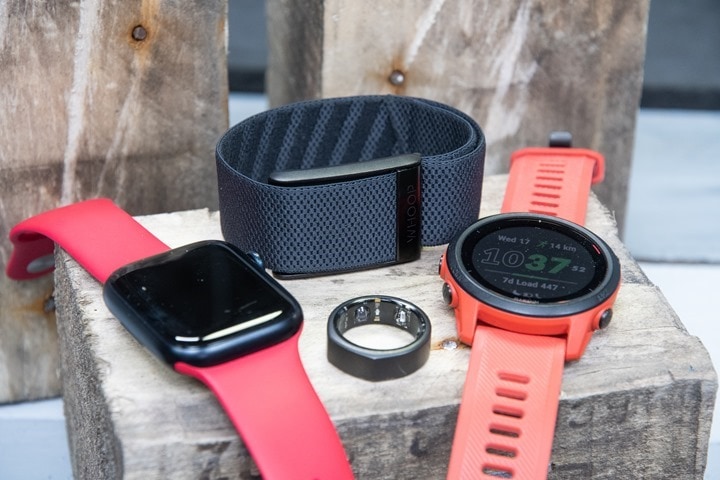
As noted earlier in the review, in the Whoop world, your daily ‘Recovery’ score is based virtually entirely on your sleep. Meaning that while you may have done a big workout the day prior, that doesn’t actually directly influence your recovery score. While there is a tiny bit of nuance to that we’ll get into in a moment, the reality is that a device properly tracking your sleep is what’s driving virtually that entire number. First I’m going to explain what Whoop does, then explain how well it actually works.
Whoop 4.0 tracks a number of things during sleep, including: The time you fell asleep, the time you woke up, exactly how much of that in-between time was asleep, sleep phases, your body temperature shifts, SpO2, breathing rate, and HRV values.
Most of these things are then weighted and pulled into the sleep score. A far higher weighting is given to your HRV values than other aspects of sleep (such as duration). Earlier this summer (2021), Whoop adjusted its recovery scores significantly, most notably now validating the HRV values over the entire night of your sleep, rather than a single 5-minute period of your last deep sleep (which was heavily prone to error).
Now when it comes to Whoop and my testing, there are four key things I’m looking at:
A) Did it track when I went to sleep correctly?
B) Did it track when I woke up correctly?
C) Did it track any obvious awake periods?
D) How does the recovery score it gives me, match how my body feels (perceived effort)?
You’ll note I’m not tracking sleep phases. Frankly, there’s little user actionable data there for the majority of people – and even less ability to truly measure/compare it. Even the best scientific sleep-phase devices only average 90% accuracy, and the best consumer-available devices are in the 80’s. And while that might sound high, we’d never accept a device that’s blatantly wrong 10-20% of the time for heart rate data (e.g. 70bpm vs 160bpm), would we? Thus, while I think it’s interesting, I can’t reasonably judge any reviewed device against something that’s just not accurate enough by itself. Make sense?
But what I can do is start with the basics, which is can it figure out when I’m asleep. In my case, I know well enough from nearly two years of Whoop 3.0 data that by and large, Whoop 3.0 was exceptionally good at figuring out when I was asleep and when I woke up. Almost always to the minute, even with a newborn and little kids tossed in there at one point (or wonky sleep schedules). And this was true no matter where I wore it (wrist, upper arm, bicep).
At a broad level, Whoop 4.0 is just as accurate on the wrist in my testing, but I find it far less accurate when worn in Whoop Body apparel locations, including the boxer-briefs and the bicep band. While admittedly wearing the bicep band to sleep probably isn’t a super common user case, the boxer-briefs are, and are arguably the most common use case there. In my testing, the boxer placement location would consistently believe that couch time was sleeping time. More on that in the next section.
In any event, if we set that aside, I’ve collected a boatload of data comparing Whoop 4.0 to Oura V3, and then depending on the night, also to a Garmin FR745, Apple Watch Series 7, or Fitbit Charge 5 (with Daily Readiness). It’s a lot of data, and thus the only way to really present it is just a chart:

For each night, I recorded within a few mins of when I fell asleep, and when I woke up. I also then recorded the exact times listed by each device. Notable are two surprising errors by the Garmin FR745. The first time in a year I’ve seen it totally miss the boat. Garmin has dug into those pretty deep, and believe both are actually related to my flight back, and the unit getting in a weird state sleep-wise. Fwiw, I haven’t seen that since. The simple summary of the above is that basically, all the devices were generally very very good at nailing the times I went to sleep or woke up, with the exception of the Whoop 4.0 when used in Whoop Body boxer, or bicep locations.
So, what about recovery scores? Well, each device has different algorithms that drive what makes up a recovery score. There is no international standard here. It’s sorta like a burrito, everyone does it differently. One person might like more beans, whereas another prefers it with less beans and more cheese. As long as everyone understands carnitas is the way to go, we can keep things civil. In terms of these scores, companies generally weight a few core things: Sleep duration, HRV values, and some aspects of sleep phases. From there, they may apply scoring that looks at previous days sleep (Fitbit Readiness, Oura Ring) or at how much activity you did the day prior (Garmin Body Battery).
While there is no international standard, that doesn’t mean they aren’t comparable. Ultimately, they’re all telling you roughly the same thing: How recovered are you, and to what extent should you work out today? Some companies split these up slightly. For example, Garmin/Fitbit/Oura split up sleep scores from readiness scores, whereas Whoop just gives you one score. Further, while occasionally our bodies give us mixed signals on how we feel, in general, we know our own bodies pretty well. If we feel like crap, the data should (hopefully) reflect that. Thus when I get 10 hours of sleep and a device says my recovery score is 35%, while inversely when I get 4hrs of sleep and my device says recovery score is 90%, then I know the device is likely incorrect.
So with that in mind, here’s how these scores compared over the last few weeks with how I felt. Each morning I’d record how I felt before I looked at the data, thus ensuring I wasn’t biasing the data. I usually waited about an hour or so after waking up, simply to not confuse my desire to lie in bed forever, with how my body actually felt. Note that I didn’t think to start recording my perceived levels until about 8-9 days ago. Sorry!

In the case of Whoop, I’ve consistently found, both in Whoop 4.0 and Whoop 3.0, that it has the least correlation between my actual feelings and what the score says, of most of these devices. Sure, sometimes it gets it right – for example this weekend sleeping in till 10:45AM. But there’s also just a lot of days where I get decent sleep, and it’s just like “Nah, here’s a 28% for you.”, to which I’m like: “Ok, thanks, but no.”
Whereas if I looked at other devices, I’d say that the vast majority of the time my body’s feelings matched that of what Oura V3 was showing for readiness scores, and what Garmin’s Body Battery was showing.
(Random sidebar tidbit: For all my Whoop recovery scoring data, when dual-recording, I only used the Whoop device that was in my primary account and thus not my secondary device, which wouldn’t have had a long term understanding of my sleep patterns. The same goes for strain scores too. Meaning, that the only data I gathered or showed in this review from the secondary device was the raw/core data of sleep times, and heart rate values for workouts. Not strain or recovery scores.)
Whoop Body:
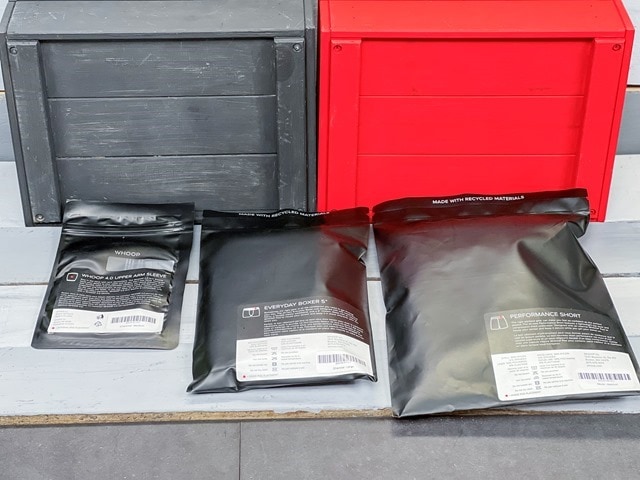
This section, I hope, will be short (or at least, shorter). When Whoop announced Whoop 4.0, they announced a new line of apparel that has a small pocket for the Whoop 4.0 sensor. This apparel doesn’t have any special metal or such in it, it just has a small hole that the sensor can (very snugly) fit into, holding it in place while letting the optical sensor do its thing. The apparel is basically divided into two camps: Workout stuff, and non-workout stuff.
In my case, I bought three specific things: A few pairs of boxer-briefs (they’re more briefs than they are boxers, despite what Whoop says), a pair of their workout shorts, and an arm-band (not to be confused with the bicep band, which is different). These all came well more than a month before my actual Whoop 4.0 pod came.
First up, I’ll say all feel well made – which they darn well ought to be for the price they’re charging. So that’s good. In the case of the shorts, they have an inner skin-tight liner. So just keep that in mind. Both the shorts and the boxers fit a bit more snugly than I’d normally wear either, but then again, that’s the point: To ensure snug optical sensor contact with your skin.
Inside each garment, there’s a small pocket for the sensor, which in turn has a tiny Velcro bit to keep the sensor in there. Though frankly, the sensor pocket fit is so snug the sensor isn’t going anywhere anyway, even if the ‘door’ was open. Here’s inside the workout shorts:

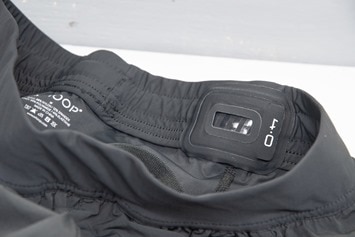
Here’s inside the boxers:
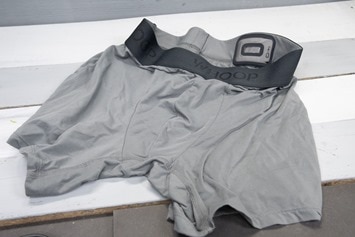
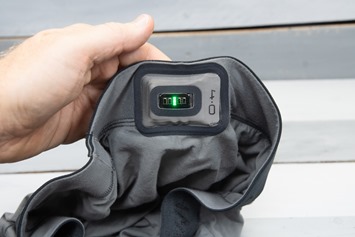
For both boxers and shorts, the sensor is off-set to your back left, perhaps 2-3” from the centerline of your back.
And then the armband:
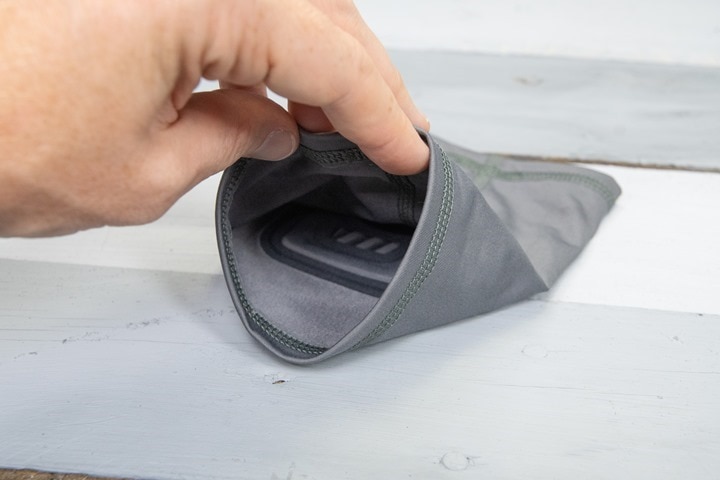
Now, starting with the boxers first, general wearability was very good here. I did numerous days of wearing this, and sleeping with it – and I’m pretty happy there. In fact, one of the big benefits is heart rate stability during daily 24×7 usage, as I outlined earlier in the post. This meant that it got rid of most spikes and virtually all fake-strain went away.
Now as good as I’ve found the Whoop boxers for better and more stable heart rate accuracy, it also introduced significant false sleep times. In fact, in 3 out of 4 nights wearing or using them, data was substantially wrong, including in one night it didn’t record at all. For example, just last night the Whoop 4.0 sensor in the boxers simply stopped recording heart rate apparently for about 3-4 hours while I was sitting in a chair on my laptop (and also doing random things around the house).
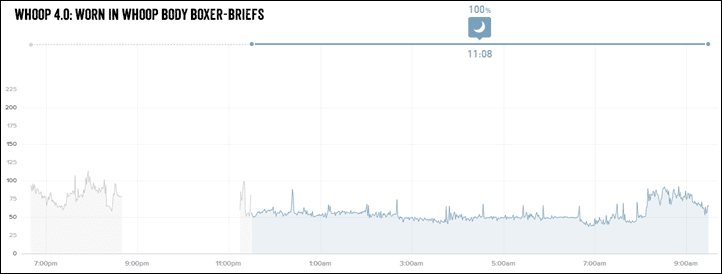
Note above the highlighted blue section, that’s when Whoop thinks I was sleeping. So, adding insult to injury, then this morning, I walked the two oldest girls to school (about a 10-minute round-trip) at 8:25AM, then I got home and pedaled my youngest daughter to her daycare (about a 15-minute round-trip) at 8:45AM. Then I got home, did the dishes, made coffee and breakfast, and started working (9:00-9:20AM). The Whoop 4.0 in the Body Boxers thought I was asleep the entire time.
Compare that to the Whoop 4.0 sensor worn on my wrist, and you can see a substantial difference:

Though, as I noted earlier, you can see how the boxer position correctly reduces the fake-strain this morning from 8:50-9:20AM, whereas my wrist thought I was at nearly 150BPM. So I suppose that’s positive.
In talking to Whoop, they noted that they’re continuing to work on Whoop Body apparel accuracy. They believe on the whole it’s fairly accurate, but also admitted there are use cases and for specific people where it just might not work out properly. They noted that’s why they offer a 30-day return policy for it. They also said “a lot more [is] in the works” in terms of other clothing locations.
It’s too bad, I actually really love the idea of just having the sensor totally out of sight and out of mind. But it has to work the majority of the time. Sure, I can correct the sleep issues easily in the app, but I can’t correct the gap period, which isn’t explainable. Nor can I correct the missing night of sleep (which you see throughout my performance reports too).
Switching over to the Body workout shorts, those too have felt good during workouts, though they actually make a lot of noise. Specifically, the liner material rubbing against the outer shell material is akin to walking through a ski lodge with a snowsuit on. In a quiet setting, my wife turned her head as I walked past and was like “WTF is that?”. Though, on a run outside, I don’t hear/notice it.
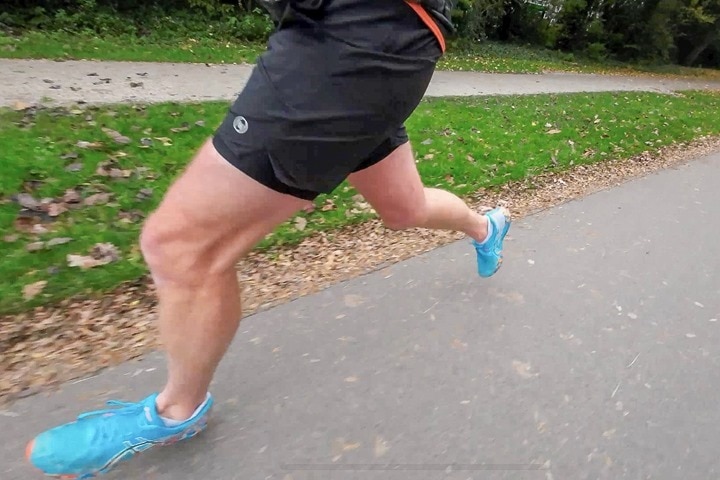
In any case, accuracy-wise, these do fairly well actually for me, and in particular, did well during upper-body/lifting scenarios where the wrist failed. I’ve outlined those tests down below in more detail.
Next, while not a Whoop Body accessory specifically, it is an accessory – which is the bicep band. This is, quite literally, just a longer version of the same wrist strap. In fact, both myself and many others I know (including Whoop employees) will simply slide the regular Whoop strap to the very end of the length, and thus getting you a bicep band (assuming your arms are like mine, and wimpy). But the purpose of buying a bicep band is to have two straps, and thus, here ya go (the longer strap is the bicep band, the shorter one the regular strap).
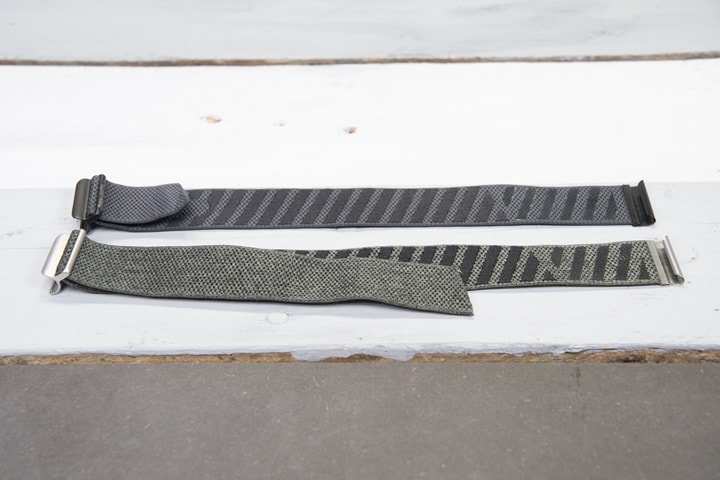
Inversely, you can buy a bicep band, and cut it down a bunch, then simply take a lighter to the end of the strap to make it ‘clean’. But the reason you’d want two bands is that the Whoop band is fabric, and as such retains water/sweat. To my surprise, my Whoop 3.0 band never stank, despite nearly 2 years of 24×7 usage and almost daily workouts (followed by showering). Of course, the challenge with wet fabric on your wrist after a shower is that it then gets long-sleeves wet, or if you place your wrist on your legs, it gets that wet (or anything else you touch your wrist to).
So with the new clasp system, it only takes a second to swap bands, versus previously with Whoop 3.0 it’s a bit messier to get the strap through the pod (especially when it gets older and more frayed).
Anyways, I’ll try more Whoop Body pieces over time, and add to this section as I do so.
Workout Heart Rate Accuracy:
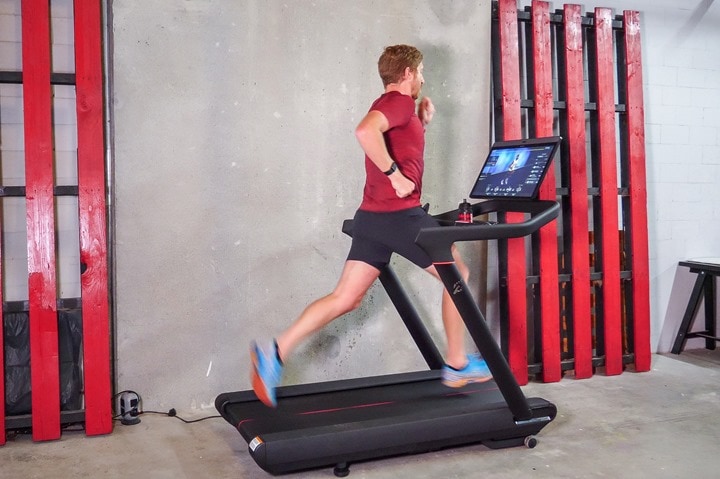
In the event I haven’t pounded this point home yet by now, the heart rate data that Whoop collects is *EVERYTHING* to Whoop. It’s like a jetliner and fuel. Without it (or with bad fuel), it’ll crash. Unlike most other wearables, the Whoop can’t connect to 3rd party chest HR straps or sensors that may be more accurate. And it can’t import any other data into the platform. So everything has to come from that little sensor. The big question is, is Whoop 4.0 more accurate in workouts than Whoop 3.0?
For that, I’ve put it through a slew of different sport tests, comparing it against numerous other sensors concurrently during the same workout. This has included chest straps from different vendors, other trusted optical HR bands from varied vendors, watches from four different vendors, and even Whoop against themselves. I’ve tested Whoop 3.0 and 4.0 side by side, Whoop 4.0 vs Whoop 4.0 side by side in different placements, and Whoop’s side by side on my wife too.
In other words, I’ve got a disturbing amount of data, and I’m going to try and distill it down to the key bits of information, rather than just dumping a huge pile of charts on you. As noted, this data set includes running (indoors and outdoors), cycling (indoors and outdoors), and strength training (upper body lifting primarily). Obviously, there are countless more sports, but that’s the sports I do.
I’m going to start out with what’s been one of the more challenging things for Whoop to deal with historically – cycling outdoors. It’s been ironic because Whoop sponsors one of the UCI WorldTour teams (Tour de France teams), yet the sensors would historically be useless there. Still, this 2.5hr ride with a Whoop 4.0 on my bicep (using the regular strap) proved immediately things have changed. Here’s that ride compared to a Polar H10 chest strap, an Apple Watch Series 7, and a Polar Verity Sense optical armband. Here’s that data set:

I could dive in closer on the above set, but frankly, it’s not worth it. We see only a handful of brief moments where the Whoop 4.0 pod doesn’t match the others, in all these cases undercutting for a few minutes. There would be likely a very minor difference in strain in terms of these short periods of inaccuracy, but not enough to meaningfully impact what Whoop is tracking at the training load level.
Next, let’s look at a pile of 800’s in the heat of Florida, about 4PM on a 90*F day. In other words, let’s make it miserable. Also using the regular strap on my bicep. Here’s that data set:

Once again, very strong compared to what I’ve usually seen. The Whoop 4.0 in teal shows some very slight delay on the main 800’s (longer intervals), and being about 1-2bpm low. Again, nothing that’ll substantially impact the training load. For the shorter 30-second intervals though, we can see it’s more delayed, but also is undercutting these higher intensity efforts. This would have slightly more impact on training load, since the higher the intensity the more the impact in terms of strain. But given these durations are so short, in this particular instance, the impact was mostly minimal.
What about mountain biking you ask? Well, that’s inherently a much messier data set by itself. And in general most optical HR sensors struggle. Again in this case I was wearing it bicep style (using a regular strap). Here’s that data set:

As you can see, the MTB data is definitely noisier, both by Whoop, but also everyone else. Still, aside from missing two sprints that only the chest strap captured, it generally got the gist of things. Missing those two sprints would have resulted in lower training load (strain), especially given they were moderately intense (160-170bpm for a few mins). But in this case, the Garmin FR745’s optical HR sensor was equally bad in those sections (if not worse actually). The only (substantial) difference is that with a Garmin you can pair another chest strap/sensor if you know the activity your doing isn’t ideal for optical HR. With Whoop, you can’t.
So let’s change again, this time to an indoor workout. This was a reasonably challenging workout, and this time I’ve got the Whoop 3.0 and Whoop 4.0 in a bake-off, with the Whoop 4.0 going wrist-style, whereas the 3.0 was on the bicep (note the color change, sorry). How’d it end up? Surprisingly good actually:

Not only did the Whoop 4.0 band basically hold on for dear life and nail all of this on the wrist, but the Whoop 3.0 on the bicep (using a wrist strap), also managed to be nearly identical the entire time. In fact, the only time we saw the Whoop 3.0 falter (in blue here) was the very last interval, wherein it succumbed to falling low and slow, whereas the Whoop 4.0 rose above it (in yellow) and stayed with the reference units:
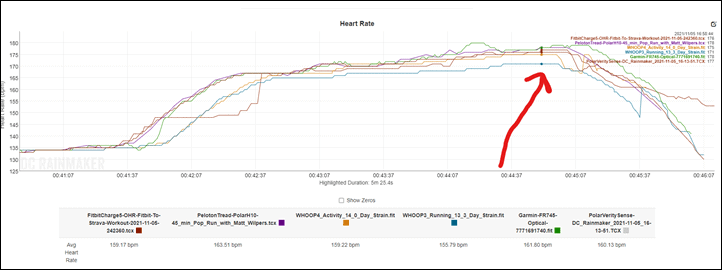
But pulling off intervals in warmer weather (indoors) is easier than colder weather, due to the way optical sensors work with blood flow. So, let’s head outside and throw down intervals at the track. In this case, the Whoop 3.0 was on my left wrist (in blue), and the Whoop 4.0 was on my right wrist (in purple). Also compared to a Garmin HRM-PRO chest strap, and a Polar Verity Sense optical sensor. Here’s that data set:

Now we see the Whoop 3.0 in blue struggle a bit early on for a few mins, but then gets it’s act together. The Whoop 4.0 though is virtually lock-stop with the other sensors. As we get into the 400m intervals, we notice the Whoop’s slight undercutting. This is important because it means it’s got reduced strain compared to what I’m actually doing. If we look closely though, we’ll notice the Whoop 4.0 is slightly more accurate than the Whoop 3.0 sensor in almost every one of the shorter 400m intervals. In 6 out of 8 of these intervals (highlighted in yellow), the 4.0 is nearly identical to the reference units. Whereas in 8 out of 8, the Whoop 3.0 is lower than them.

But wait, what about the shorter 200m sprints at the end? Well, both Whoops fail there, considerably below the real numbers. They both entirely miss the intervals, in terms of the load/strain here. In fact, the Whoop 4.0 sensor did worse in every one of these than the Whoop 3.0 sensor. Granted, these are only 30 seconds long each, but that’s the point of sprints. Had I done something like 20x30s, or 30×30, that’d be huge in terms of strain.

Next, another outdoors run, this time Whoop 4.0 in the Body Workout Shorts, versus the Whoop 4.0 on my wrist. In this chart, my graphics engine got sick and threw-up hideous colors. Sorry. The main takeaway is that the Body Shorts had a rough first few minutes, but then stabilized nicely, and in fact easily outperformed the wrist-based Whoop 4.0 for all of the intervals and high-intensity moments the rest of the run. The Whoop 4.0 on the wrist wasn’t horrible or anything, it just wasn’t as accurate as the reference units, nor the Whoop 4.0 in the running shorts. Here’s the data:

Ok, ok, we’re getting towards the end here. Time for some strength training.
First, we’ll do a mixed workout. In this case, I start off with 20 minutes on the treadmill and some high-intensity intervals. Like, this was some legit speed work here to get the heart rate cooking (4:48/mile intervals). I’m comparing Whoop 4.0 on the wrist vs Whoop 4.0 in the Body shorts. Here’s the data:

We easily see the Whoop’s all struggle here at various times, as did the Garmin FR745 on the wrist optical sensor at times. The Polar H10 and Polar Verity Sense had no issues. It is clear though that outside of some initial warm-up wonkiness again in the shorts (seems like a pattern), that once warmed up, the Whoop 4.0 in the shorts did better than the wrist placement for this workout, getting closer (but still too low) on the intervals. The difference in strain here would have been fairly moderate.
Next, I jumped right off the treadmill for upper body sets. All the sensors stayed in their places. Now, the below is kinda messy to look at. There’s lots going on. But essentially, the Whoop 4.0 on the wrist was a dumpster fire here, with the FR745 on the wrist not being far behind in the dumpster. The Polar Verity Sense (an optical sensor on my bicep) kept up just fine here. And the Whoop 4.0 in the body shorts? Well, it started off a bit in the middle, mostly missing the higher intensity, but nowhere near as bad as the Whoop 4.0 on the wrist.

By time I got into the second half, that Whoop 4.0 shorts sensor actually did quite well, and mostly stayed in the game just fine. I had some export issues with timing to Strava, so it’s missing the last 5 minutes in the above graph, but in eyeballing it from the charts, it follows along with the chest strap quite nicely. Thus the shorts are very viable for better results while lifting.
But let’s do this again. This time with a bicep position instead. For this one I armed my wife (literally) with a Whoop 4.0 sensor on her wrist, as well as one on her bicep. Then a chest strap and a Polar Verity Sense too. I wanted some data from her, mainly because she loves the gym and strength training, and has a background in elite athletics as well as coaching.
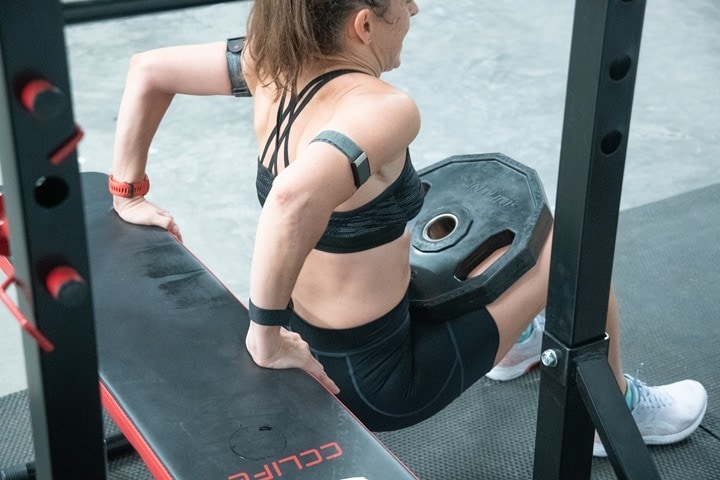
First, she did a 30-minute hard intensity Peloton workout. Then, she went to start lifting for another 30+ minutes, which is where I got her all setup with the Whoop’s. Here’s the results:

Essentially what we see is that neither placement nailed the fast high-responsiveness for short high-BPM bursts like the chest strap (just like we’ve seen running). However, the purple line of the Whoop 4.0 bicep location very clearly did a far better job of mimicking the heart rate strap’s highs and lows than the wrist location.
It responded faster to the ups and downs than the wrist location. That said, in this particular case, even the wrist placement wasn’t horrific in terms of general trends. It would have resulted in less strain than a chest strap though. However, that’s part of the challenge with strength training and HR-driven metrics to begin with, even Whoop admits it’s not ideal. That’s because cardio heart rate is usually a lagging indicator, and a lagging limiter in strength. Your muscles are more than likely to fatigue before your cardio system. As they admit this limitation in their own support page:
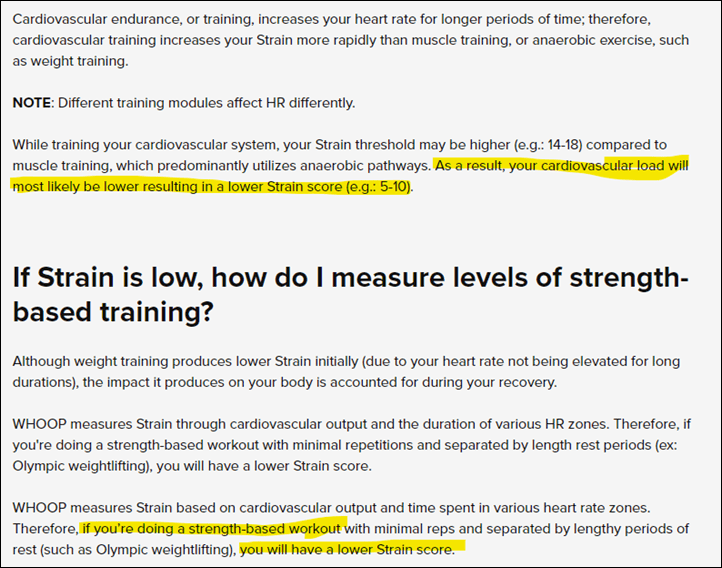
Of course, the above parts in between the yellow line somewhat sidestep the responsiveness delays introduced by their sensor algorithm, which are contributing to this.
–
Ok, so where do we stand? Well, in a heck of a lot better position than Whoop 3.0, at least in terms of workout accuracy. In general, for most of my workouts, the Whoop 4.0 sensor in either the bicep or wrist location (choosing which one depending on the workout and conditions) have have resulted in accurate-enough strain for Whoop’s purposes. The exceptions being it continues to struggle at high-intensity short-duration activities, where it constantly undercuts reality. In those cases, Whoop is showing less strain than reality, which in turn would also undercut how much recovery (sleep) hours you needed. Though, it virtually never overcommits strain.
Still, these gaps would be *EASILY* solved by allowing your Whoop 4.0 sensor (or even the Whoop app) to pair to a chest strap. My guess is that the Whoop 4.0 sensor probably could operate in a mode whereby it connects to secondary devices, such as a saved sensor ID. This would be similar to how some other devices work (like the CORE body temp sensor), whereby it saves the Bluetooth ID of your heart rate strap, and then automatically pairs to it when it’s there. This would instantly solve these cases. Or, they could easily do it in the app. And again, this would solve this.
I don’t know why Whoop keeps on thinking it needs to boil the HR sensor accuracy ocean. There’s a good reason why *EVERY OTHER DAMN ATHLETIC DEVICE* (well, except Fitbit) on the market allows pairing to a chest strap: It works. Almost every time. Nobody is giving Whoop points for doing it entirely in their sensor. Everyone will give points for allowing secondary pairings, and they’ll *STILL* pay Whoop $ 30/month for it. This continued strong-headedness boggles my mind. Namely, because it’s being too proud to realize their stuff isn’t actually perfect. Doing so doesn’t reduce their income, or reduce their appeal. It merely makes their platform more accurate, which in turn makes people more likely to keep using it (and others more likely to recommend it). And again, keep paying Whoop.
(Note: All of the charts in these accuracy sections were created using the DCR Analyzer tool. It allows you to compare power meters/trainers, heart rate, cadence, speed/pace, GPS tracks and plenty more. You can use it as well for your own gadget comparisons, more details here.)
Wrap-Up:
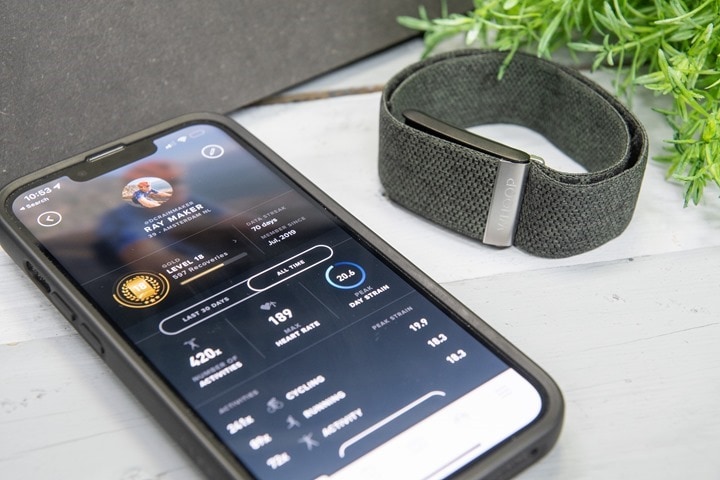
It’s clear that Whoop 4.0 is a substantial leap forward in terms of workout accuracy over Whoop 3.0. Despite nearly two years of data on Whoop 3.0 with workouts, virtually every workout showed moderate to substantial heart rate failures. But with Whoop 4.0 that’s no longer the case, at least to that extent. Now, I’m getting many workout heart rate datasets that are is near identical to other leading wrist-based sensors and sometimes even chest straps and other trusted arm-band sensors. I’m also seeing no virtually fake-workouts that I used to see with Whoop 3.0, wherein it thinks me doing the dishes is me throwing down a HIIT workout.
But it’s still not perfect. If worn on the wrist, it continues to be troublesome for lifting and other upper body workouts. In both my and my wife’s testing, this is easily mitigated by wearing it on the bicep or using an alternative Whoop Body apparel location (such as the shorts). Still, there have been some high intensity workouts that whether worn on the bicep, shorts, or wrist have incorrectly shown lower heart rate values, which in turn contribute to lower strain values. In terms of measuring workout strain, if one uses the bicep (or other location) for upper body workouts, then my data shows the accuracy is largely good enough for Whoop’s strain load tracking across all of the sports I’ve tested to date. Meaning that while there are some errors, if looking through the lens of training load (which is what Whoop does), these errors are minor enough not to substantially impact the results or your takeaway actions.
Slightly more concerning, as noted earlier is I’m consistently seeing fake-strain on the wrist, whereby it’ll report high heart rate values during times of relaxation or working at a desk. Now in the context of someone who is fairly athletic, this additive strain is low-level enough that it’s not meaningfully impacting my total daily strain scores or recovery scores. It’s not ideal, and it’s nothing like the errors I saw with Whoop 3.0 and fake strain.
That ultimately gets to the main question: Is Whoop 4.0 worth it? In that context, it’s less about Whoop 4.0, and more about the platform at large. After all, you pay for Whoop as a platform, and you get the latest sensor anyway. And ultimately, that’s a tougher question. I feel like the bulk of the athletic strain bits are in a far better place with 4.0 than 3.0, and thus with the placement caveats noted, it’s delivering a reasonably accurate representation of your daily workout load. As such, for the sports I do, I could use this to mostly track my effort over time.
In terms of recovery though, that’s a much tougher pill to swallow. While Whoop 4.0 and its sensors reported my sleep times correctly virtually every night when worn on the wrist, it had incredibly variable recovery scores relative to how I actually felt. I don’t believe that Whoop’s recovery algorithm at this time is reflective of enough data components to accurately give a good recovery picture. More simply put, it seems spastic and far too dependent on its HRV measurement. Comparing how I felt each day to the recovery scores presented by numerous devices, Whoop was consistently the outlier the vast majority of the time, especially when I was exceptionally low on sleep (3-4hrs). And thus ultimately, I don’t find much value in Whoop’s Recovery scores – which is essentially half the service.
In summary, Whoop’s user interface, ease of use (including with Whoop Body apparel), and journal tracking/logging features are by far industry-leading in this sector. And their new 4.0 sensor clearly fixes many accuracy issues of the 3.0 sensor, especially as it relates to workouts and heart rate accuracy. But I’m not convinced yet that Whoop has addressed the shortcomings with their recovery algorithm, which ultimately seems to be akin to throwing a magic eight ball down a flight of stairs. The good news is that unlike the sensor issues of 3.0, they can fix the platform-level recovery scoring system through an algorithm shift – if they chose to do so.
With that, thanks for reading!

